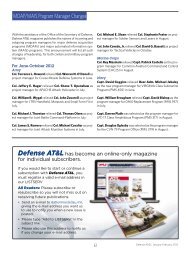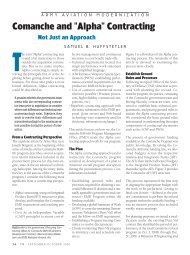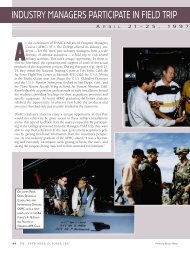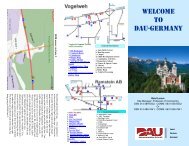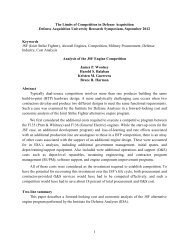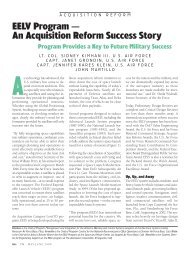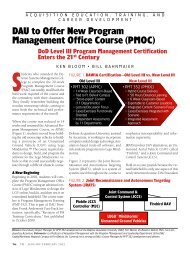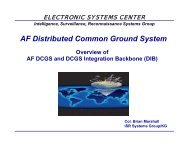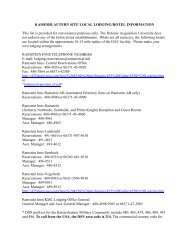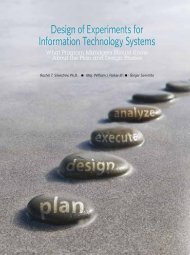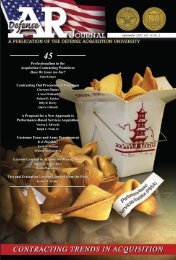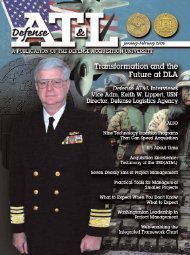Defense ARJ - Defense Acquisition University
Defense ARJ - Defense Acquisition University
Defense ARJ - Defense Acquisition University
Create successful ePaper yourself
Turn your PDF publications into a flip-book with our unique Google optimized e-Paper software.
tHe <strong>Defense</strong> acQuisition fraMeWork:<br />
unDerstanDinG tHe scoPe of reforM<br />
systeM of systeMs DeVeloPMent<br />
Determining exactly what is being discussed assumes particular importance in<br />
defense acquisition because—depending on context and audience—the term “acquisition”<br />
is used to describe different constructs. Particularly important for this paper are<br />
two distinct perspectives that are commonly distinguished by the terms “little a” and<br />
“big A” acquisition. 2<br />
“Little a” vs. “Big A”: The <strong>Defense</strong> <strong>Acquisition</strong> Framework Through Two Lenses<br />
“Little a” acquisition describes the activities that occur within the <strong>Defense</strong> <strong>Acquisition</strong><br />
System (DAS). Typically, factors such as cost, schedule, performance, and<br />
risk concern DAS participants as they work to develop actual systems. However, two<br />
additional and distinct decision support systems specify warfighter requirements and<br />
provide funding.<br />
The Joint Capabilities Integration and Development System (JCIDS) is used<br />
to define and generate requirements. Resources are managed through yet another<br />
process that coordinates cost estimating and funding activities, known as Planning,<br />
Programming, Budgeting and Execution (PPBE). The triumvirate of DAS, JCIDS,<br />
and PPBE is intended to establish an integrated defense acquisition, technology, and<br />
logistics (AT&L) life cycle management framework (IFC, 2005). The term “big A”<br />
usually refers to this larger framework of three interconnected and interlinked acquisition<br />
systems (Figure 1).<br />
Observers of defense acquisition processes increasingly emphasize the importance<br />
of understanding problems that arise from interrelationships, interdependencies,<br />
and conflicts among these three systems. The need to harmonize different perspectives,<br />
interests, and objectives across the framework presents a fundamental defense<br />
fiGuRe 1. three interaCting systeMs in “Big-a” aCQuisition<br />
177



